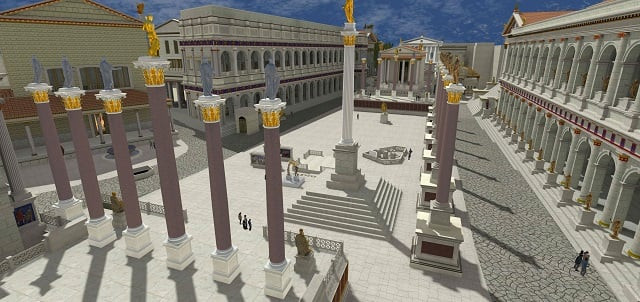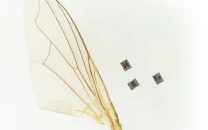Virtual reality resurrects ancient Rome bit by bit
It is the first to show users over 7,000 buildings and monuments from the year AD 320

This photo handout on November 21, 2018 by the Rome Reborn Virtual Reality project and Flyzone Productions, shows a virtual reality image from the project's interactive application, showing the Roman forum (from West to East), the center of the ancient city, where were located the major law courts, government buildings, temples of the state religion, and historic monuments.
PHOTO: AFP
The Rome Reborn tour is the first to show users over 7,000 buildings and monuments from the year AD 320, allowing both those with Virtual Reality goggles or just a computer to explore over 14 square kilometers (five-and-a-half square miles).
"I first came up with the idea in 1974. I was determined to find a way to bring these wonderful monuments to the world, but the technology didn't exist then," the project's director, digital archaeologist Bernard Frischer, told AFP.
Facebook unveils wireless Oculus VR headset
"We had to redesign the model three times as technology advanced, but 22 years after we began, and three million dollars (2.6 million euros) later, we're finally here," he said.
Users can currently do a "fly-over" of ancient Rome as well as stop and explore two sites, the Roman Forum and the Basilica of Maxentius and Constantine, designed with input from a team of archaeologists.
"We chose AD 320 because we have the most information for that period so we can be as accurate as possible, and after that, the empire's capital moved to Constantinople," said 69-year-old Frischer.
"At the moment you can travel in a virtual hot air balloon over the ancient city, and teleport between different parts of historic sites to see them as they were and learn more about them.
"In the next two to three years we will add other key sites, such as the Colosseum and the Pantheon," he said.
Users are able to switch between views of the monuments as they are now -- the ruined remains -- and as they were then.
The project is named after the words of 15th-century papal secretary Flavio Biondo, who is the first documented person to have called for a reconstruction of ancient Rome.
Apple buys startup focused on lenses for AR glasses
Frischer, a classics scholar who teaches a PhD in Virtual Heritage, said users wearing virtual reality goggles would eventually be able to train together as gladiators in the Colosseum or race each other in chariots around the Circus Maximus.
Flyover Zone, the company behind Rome Reborn, plans to reconstruct Athens in the time of Socrates and Jerusalem in the period of Jesus Christ.
It is not the only project which allows people to see Rome as it was under various emperors, but those wanting to explore Nero's Domus Aurea palace and the Caracalla thermal baths have to use virtual reality goggles on site.



















COMMENTS
Comments are moderated and generally will be posted if they are on-topic and not abusive.
For more information, please see our Comments FAQ